3. SeaWorld’s implosion
Seth Kubersky, Orlando Weekly:
Obviously, I agree with Robert that The Wizarding World of Harry Potter – Diagon Alley made the biggest impact on the amusement industry this year, at least in North America. The opening of Hogsmeade in 2010 finally gave Universal a draw big enough to steal a day or two from Walt Disney World for the average visitor, but Diagon provides the critical mass to make Universal Orlando a viable destination in its own right.
It won't happen overnight, but the kids I see around the parks today seem more enchanted by interactive wands than MagicBands, and they will remember that in 20 years when they are bringing their own children to Orlando.
Diagon Alley may end up having a larger effect on Disney World than Universal itself. After a decade of complacent stagnation at WDW's theme parks, we've recently seen a marked acceleration of long-discussed expansion plans, especially at Hollywood Studios (soon to be Hollywood Adventure?) and Animal Kingdom.
While Star Wars and Avatar lands have been in the works for years, it's hard to see the flurry of closures and construction in the last few months since Potter's much-publicized premiere as a complete coincidence.
If intensified competition has incentivized Disney to increase investment in its parks, all the better for both companies' customers. But I agree with Marc that there is a danger of the Wizarding World model being applied indiscriminately to inappropriate intellectual properties. Universal's integration of high-tech attractions, unique food and beverage, and collectible merchandise only works because J.K. Rowling created rich source material replete with appealing experiences (edible and otherwise) that can be recreated in a theme park environment.
The problem is that the Potter universe is pretty exceptional in that regard; neither Star Wars nor Avatar (or even Frozen) have must-have consumables built into their narratives to nearly the same degree, nor are their environments as easily adaptable to the real world: it's easier to create a convincing castle and steam train than realize floating mountains and interplanetary transit.
Ultimately, it comes down to finding (or creating) stories that connect with audiences, and finding innovative ways of telling them that resonate with your brand. The big news is that this lesson is starting to trickle down from the top-tier chains to regional parks; Six Flags and Cedar Fair are both shifting from extreme iron rides towards family-friendly themed dark rides.
On the flip side, Antarctica's whole turned out to be less than the sum of its parts, doing nothing to slow SeaWorld's decline. I have a feeling that the implosion of the SeaWorld brand may turn out to be the 2014 story that has the longest legs in 2015.
(PS I'm planning my first trip to Disneyland Paris for next fall, and can't wait to see how Nick's observations about the resort's future play out in person!)
4. Disney World’s creative resurgence
Robert Niles, Theme Park Insider editor-in-chief:
Yes, we all should be happy that Disney is pouring money into Euro Disney, but I've lost count of the number of Disney bailouts here. At this point, I'm not expecting any permanent fix – or even change in direction – for Disneyland Paris until Disney buys it outright and assumes complete responsibility and control for the project.
I think that we should be looking to Avatar to see what Disney does next with a Diagon Alley-style immersive environment. Keep in mind that I'm saying a Diagon Alley-style environment, not a Diagon Alley environment. The great theme parks distinguish themselves from the copycats in applying lessons learned from other parks in ways that are appropriate to the IP and to the environments that they are creating. Diagon Alley calls for a particular mix of experiences; Avatar will demand another.
But, from all I've heard, Disney is planning a similarly immersive and interactive environment for that land. This isn't to be just a common decorative theme around a collection of rides and show, but a platform upon which visitors can experience their own story within the space.
Obviously, many of us hope that Disney can do the same, and better, with Star Wars. But the challenge of creating an immersive environment for an IP that spans a galaxy is intimidating. If I were Disney, I'd want to take a shot at Avatar first, learn some lessons, then apply that knowledge to Star Wars Land.
5. Diagon Alley’s influence will be (somewhat) limited
Nick Sim, Theme Park Tourist editor-in-chief:
Robert's right to be skeptical about the future direction of Disneyland Paris, given the history of false dawns associated with that resort. What gives me hope this time around is that this is Bob Iger's Disney, which has a recent track record of investing in failing theme parks and resorts to turn them around. This isn't the Disney of the late Eisner era, which would attempt to spend "just enough" to tackle a problem (and fail, in the case of Disneyland Paris).
Yes, ultimately, it will require Disney to take full control of the resort in order for it to really reach anything like its true potential, but my hope is that this will be seen in the future as the first step along that road. If Disney is willing to (literally) stop the rot, I'm betting that it'll go further, too. Of course, it could just be yet another in a series of inadequate bail-outs. We'll see.
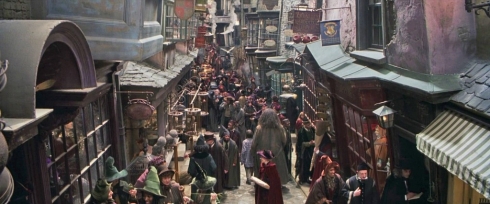 As for Diagon Alley, I think it will have an influence on the theme park industry, but there are at least three factors that will limit the scope of that influence:
As for Diagon Alley, I think it will have an influence on the theme park industry, but there are at least three factors that will limit the scope of that influence:
1. Diagon Alley basically perfects the formula that Universal created with Hogsmeade. But the problem for the rest of the industry (and for Universal) is that there are only so many franchises that offer the same potential as Harry Potter. Universal has two of them: Potter itself and The Simpsons. Disney also has several, from the bigger Pixar hits (Cars, Toy Story, etc.) to Star Wars.
(Yes, you can't build the entire Star Wars universe into a theme park land, but Universal didn't try to build the whole of Britain when it built Hogsmeade and Diagon Alley, either. And a light-speed space journey between two planets is just as plausible as a four-minute train ride from London to Scotland.)
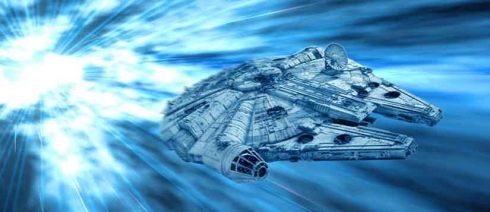 I'm sure Cedar Fair, Six Flags, and Merlin would love to copy what Universal has done with the Wizarding Worlds. But they don't have their own intellectual property to build on, and the big ones – the ones with expansive worlds adored by tens of millions of fans – are going to be snapped up by Disney and Universal. So you could argue that Diagon Alley will only really influence the top end of the market.
I'm sure Cedar Fair, Six Flags, and Merlin would love to copy what Universal has done with the Wizarding Worlds. But they don't have their own intellectual property to build on, and the big ones – the ones with expansive worlds adored by tens of millions of fans – are going to be snapped up by Disney and Universal. So you could argue that Diagon Alley will only really influence the top end of the market.
There may be some exceptions, but the only ones I can think of are those aimed at toddlers, such as Peppa Pig World at Paultons Park in the UK (which is like a mini-Wizarding World for two-year-olds and has been a huge hit on a smaller scale).
2. The fact is there are still millions of people whose main intention when visiting a theme park is to go on rides (preferably as many as possible). Theme park operators do not need to go to the same lengths as Universal has with Diagon Alley to attract these visitors and keep them happy.
Take Alton Towers, Merlin's flagship park in the UK. In 2013, it opened The Smiler, a record-breaking roller coaster with 14 inversions.
The ride's theme is virtually non-existent. The queue line is a cattle pen. Yet I have witnessed people queuing for upwards of two hours in the rain for a ride that lasts less than three minutes, only to immediately run around again and join the back of the queue. Why? Because it is an incredible, exhilarating physical experience riding The Smiler. At £18 million, it cost a fraction of what Diagon Alley cost. But I bet it serves its purpose for Alton Towers just as well as Diagon Alley serves its purpose for Universal Orlando.
It's true that the likes of Merlin, Cedar, and Six Flags are now investing in dark rides, but I don't think that's solely down to a desire to copy Universal and Disney. It's also a reflection of the fact that those high-capacity rides are now becoming more affordable, thanks to the hard work and ingenuity of their manufacturers. The parks no longer need to spend tens of millions to deliver a solid dark ride experience.
3. Not every theme park experience needs to be fully immersive and thematically perfect. Millions of people wait for hours on Disney's Main Streets every year to watch parade floats containing waving cartoon characters come past.
Thematically, this is all over the place. Does it matter? Of course not.
Diagon Alley will force Disney to up its game, and Universal will want to one-up itself, too. But there's still room for plenty of other types of experience in theme parks all over the world.
6. The last IP dominoes will fall
Seth Kubersky, Orlando Weekly:
Nick, the Orlando attractions industry is much different than what you see in Europe, and I didn't mean to imply that minimally themed thrill rides are going away entirely in regional parks. However, I think that Smiler is a good example of Alton Towers giving an iron ride a creative backstory and marketing push (as they do for many of their attractions) that gives it audience appeal beyond being "just" a roller coaster.
More broadly, the latest moves in both Europe and the USA from companies like Mack and Merlin show that balancing between story and thrill can be successful outside the Disney/Universal bubble. As you mention, manufacturers are now making high-end hardware available to mid-tier buyers at prices that should feed a virtuous cycle of customer demand for more creative dark ride experience.
At IAAPA this year, I was impressed how companies like Oceaneering, Triotech, Alterface, and Dynamic are finally offering regional parks the type of experiences you used to only find in the majors. For example, Dynamic's SFX Coaster (being built in Abu Dhabi) looks even better than Gringotts.
And in the long run, raising the bar for regional parks – and what their visitors expect from them in terms of immersiveness – should eventually force Disney and Universal to up their game.
Finally, I'm hoping/expecting the success of Diagon Alley to help shake the last few plums from the intellectual property tree. Star Trek, James Bond, and especially Lord of the Rings are the three biggest holdouts that could supply enough material for substantial theme park lands; maybe their rights holders will see how much money there is to be made from a quality product and finally bring these properties to life on the scale they deserve.
Previous All-Star Roundtable entries:
5 Reasons Why Disney’s Hotels Aren’t Full… but It Doesn’t Care
5 Reasons Why Universal’s Diagon Alley Is NOT a Flop
4 HUGE Changes Coming to a Theme Park Near You
5 Reasons Why Disney WON’T Change to Fend off Competition in Orlando
4 Ways That Universal’s Diagon Alley Will Change Theme Parks Forever
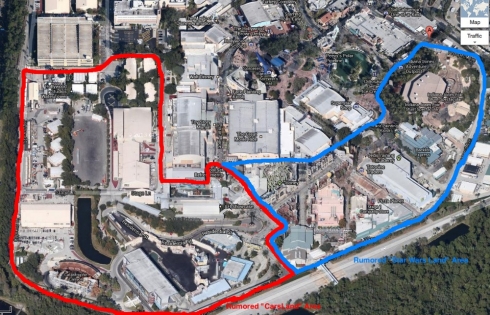
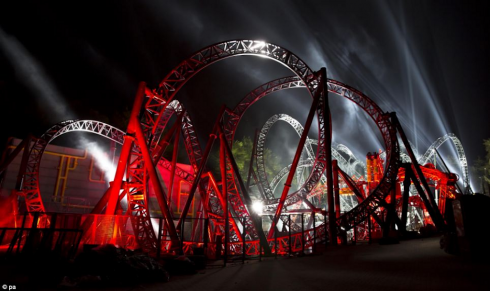
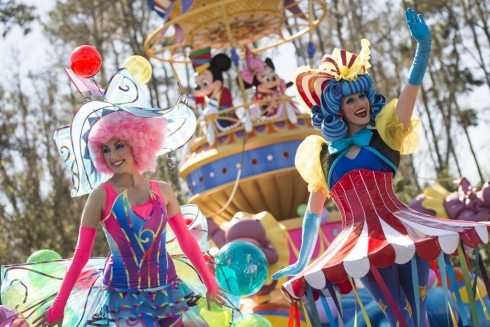
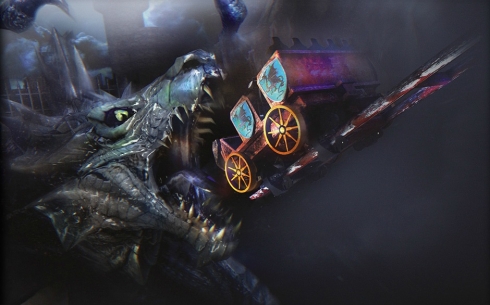
Add new comment